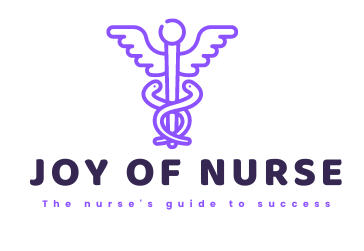Do you want to know what nursing assistive Nursing are? Or you want to become one but don’t know the procedure? Well, no need to worry; we will guide you.
Here we will cover every single thing related to nursing assistive personnel. NAP is a collective term encompassing a diverse group of healthcare professionals. They are responsible for patient fall prevention. It means helping patients by following the doctor’s instructions.
Reading this article will educate you all about them, including their work settings, salary, work, and more. Stay with us so you don’t miss anything about these health care professionals.
What Do Nursing Assistive Personnel Do?
Nursing assistive personnel are professionals whose daily tasks involve both technical expertise and empathy for healthcare staff, such as taking vital signs. Their days can often involve working closely alongside registered nurses and healthcare personnel on projects ranging from taking vital signs to monitoring patient physiologic data.
Maintaining hygiene and providing emotional support are also integral parts of their service offering. Their diverse skill set enables them to address all patient needs efficiently while also creating an atmosphere where compassionate care meets efficiency.
How Do I Become a Nursing Assistant?
Becoming a nursing assistant is a journey marked by hard work and an honest desire to make an impactful contribution in healthcare. Individuals seeking this position often take part in certification programs or formal education in order to develop the necessary skills. These include basic nursing care, anatomy, and communication techniques. Following are some of the qualifications to become a nursing assistant.
Necessary Qualifications
Here are the essential qualifications to become a nursing assistant. Let’s check out the details.
- High School Diploma or Equivalent: A foundational requirement, completing high school or its equivalent provides the basic knowledge and skills necessary for entry into healthcare training.
- Nurse’s Aide Training Certificate or On-the-Job Training: Attaining a nurse’s aide training certificate or undergoing a minimum of four weeks of on-the-job training equips candidates with the essential skills for the role, blending theoretical knowledge with hands-on experience.
- Completion of the Basic Cardiopulmonary Resuscitation (CPR) Course: Successful completion of a basic CPR course ensures that candidates are prepared to respond effectively in emergency situations, a critical skill in healthcare support.
- Demonstrated Initial and Ongoing Task Competencies: Candidates must not only exhibit initial competency in patient care tasks but also commit to continuous learning and improvement, showcasing adaptability and dedication to the evolving demands of the role.
Settings Where NAP Works
Nursing assistive personnel are adaptable professionals capable of making a difference in various healthcare settings. Their expertise is felt in:
- Hospitals: The bustling environment of hospitals is where NAP often thrives, working seamlessly to provide essential support in both general and specialized units.
- Nursing Homes: In more intimate settings, like nursing homes, NAP members offer personalized care to residents, addressing their unique needs and building meaningful connections.
- Home Healthcare: NAP can extend their services to individuals in the comfort of their homes, providing assistance with daily activities and ensuring a supportive environment.
- Rehabilitation Centers: By supporting patients in their journey to recovery, NAP members contribute to the rehabilitation process by offering compassionate care and assistance.
- Assisted Living Facilities: In facilities designed to support individuals with varying degrees of independence, NAP plays a vital role in enhancing the quality of life for residents.
- Clinics and Outpatient Facilities: From routine check-ups to specialized procedures, NAP contributes to the efficiency of outpatient services, ensuring patients receive the care they need.
- Hospice Care: In the sensitive realm of hospice care, NAP members provide comfort and support to individuals and their families during challenging times.
Understanding the versatility of NAP across these settings highlights its significant impact on the continuum of care and emphasizes its vital role in the healthcare ecosystem.
Salary and Job Outlook
While contributing to patient care is undoubtedly rewarding, it is natural to consider the financial implications of becoming a nursing assistant. Salaries for nursing assistant personnel vary based on factors like location, experience, and healthcare setting; according to ZipRecruiter, the estimated salary is $54,373! Plus, there are ample opportunities for advancement through further education or specialization.
NAP members face an optimistic job outlook, with healthcare support professionals expected to increase in demand in response to an aging population and increased healthcare needs. NAP members play a vital role in shaping healthcare’s future as patient caregivers.
Final Words
Nursing assistive personnel are more than professionals; it is an art. Their ability to combine technical knowledge with compassionate caregiver services makes them integral components of healthcare, weaving compassion into every fiber.
These professionals make unsung but essential contributions. As a society, we should recognize and thank them for being part of patient-centric care delivery systems.




